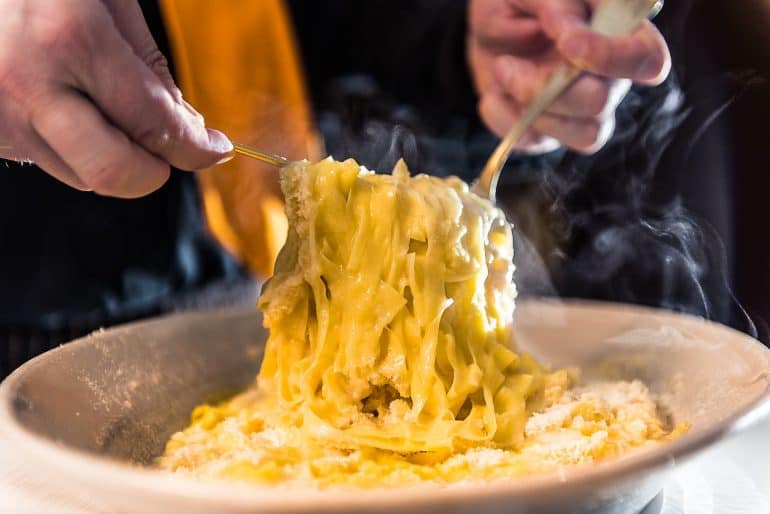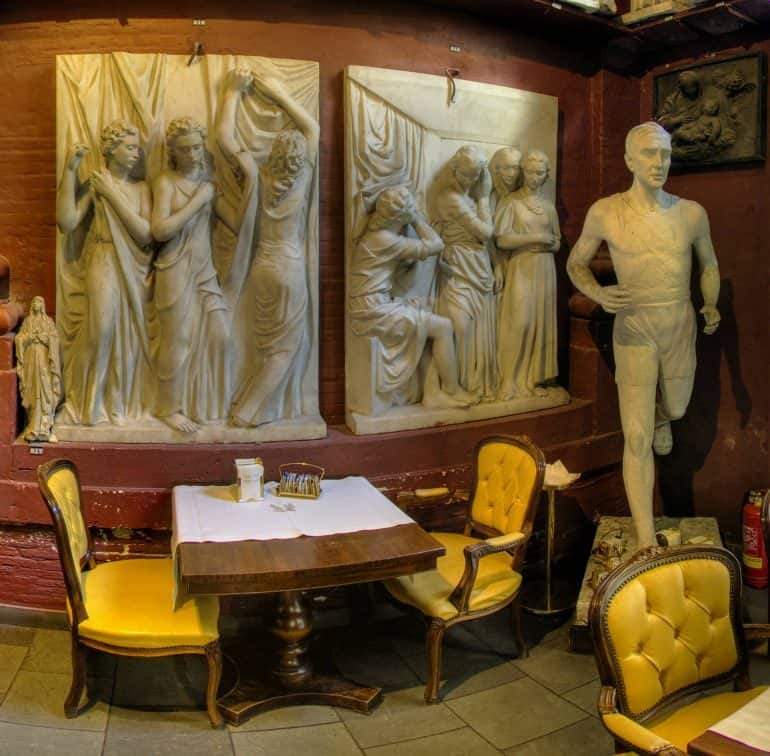Where History Meets Flavor: Discover Rome’s Most Iconic Dining Spots
Anyone can tell you that Rome is famous for its ability to lead you back into time through its stunning architecture and rich Italian cuisine. What some don’t realize is that many restaurants in this city tell of a story of their own through their buildings, location, menu and ingredients. Scattered throughout the city in areas like Trastevere and Villa Borghese, here are a few spots in particular that can teach you about previous centuries.
Colbert Ristorante Caffetteria
Villa Medici, Viale Trinità dei Monti 1 (Spagna)
Open Mon–Sat, 10am–7pm
facebook.com/colbertroma

Colbert can be found up a winding staircase inside Villa Medici in Villa Borghese. This French Villa was acquired by Napoleon in 1803 and since then it has functioned as the French Academy in Rome. One year ago, Fonderia Pasticceria and Mezzi Street Food of Rome combined forces to create four partners, who won a competition to open up a restaurant inside the villa. They have created a stunning spot that serves traditional Roman food with a hint of French influence. The spacious outdoor terrace boasts both green space and a beautiful of view of Rome, south of Piazza di Spagna.
Ristorante Spirito di Vino
Entrances on Via dei Genovesi, 31 – Vicolo dell’Atleta, 13 (Trastevere)
Open Mon–Sat, 7pm–midnight
ristorantespiritodivino.com

Sitting inconspicuously at the corner of Via dei Genovesi and Vicolo dell’Atleta in Trastevere is Spirito di Vino. This restaurant is home to a cavernous wine cellar which dates back to 80 BC – look for the perfectly preserved, Roman arch in the right side room. Parts of the facade, meanwhile, date back to the 10th century when the building originally served as a Jewish synagogue (Hebrew, faint but still evident, is written on the left column above the Vicolo dell’Atleta entrance). Last but not least, an ancient well is still visible inside the restaurant, evidence of the Jewish community’s reliance on subterranean water. The interior is rather simple, with classic white tablecloths, allowing you to focus your attention on the Roman cuisine that is carefully prepared by renowned chef Eliana Catalani. She is a member of Slow Food, a project that supports local and seasonal items. The menu even includes ancient dishes, like maiale alla mazio, pork stew simmered with red wine, leeks, apple, and honey, which is said to have been enjoyed by Caesar himself.
Caffetteria-Bistrot at Chiostro del Bramante
Via Arco della Pace, 5 (Navona)
Open Tues–Sun, 10am–8pm
chiostrodelbramante.it/caffetteria-en/

After exploring the exhibitions and galleries of Chiostro del Bramante, one can head upstairs for a little break at their cozy cafe/bistrot. There you can grab a cappuccino or a homemade pastry while sitting in seats carved into the walls of what once a cloister, admiring the view of the interior courtyard. If you really want to get comfortable, the locale also serves breakfast and lunch and is equipped with a full bar. Adjacent to the café is Sybil’s Hall where you can dine while looking through the glass windows at Raphael’s fresco of the Sybils, which is housed inside the Church of Santa Maria della Pace.
Alfredo alla Scrofa
Via della Scrofa, 104 (centro storico)
Open daily 12.30pm – 3pm, 6pm – 11.30pm
alfredoallascrofa.com

Wherever you go around the world, you hear people talking about the famous Alfredo pasta. Apparently each restaurant has their own version of the Alfredo pasta, making it a notorious dish for all Romans travelling abroad. Creamy, oh-so-tasty and al dente are the words that best describe the famous dish invented by Alfredo back in 1914. Soon, his Fettuccine Alfredo became so widely known that they crossed the Italian borders and reached international fame. But the recipe doesn’t include cream – like most people will have you believe. Alfredo’s pasta is the perfect combination of butter, parmesan cheese and pepper. The type of pasta? Strictly fettuccine. To taste the real Fettuccine Alfredo, you have to head to the historic Alfredo alla Scrofa in the heart of Rome’s centro storico. From Brigitte Bardot and Sophia Loren to Frank Sinatra and Jimmy Hendrix, no one could resist Alfredo’s fettuccine. And more than 100 years later, you can still taste them in the simple yet elegant Alfredo alla Scrofa.
Museo Atelier Canova Tadolini
Via del Babuino 150/A (centro storico)
Restaurant: daily 12pm – 11pm; Cafè: daily 8am – 12am
canovatadolini.com

In January 1818, Antonio Canova – now at the height of his European reputation – signed to guarantee the lease of his “study of use of sculpture”, in favor of his favorite pupil: Adamo Tadolini. With Adamo, Canova had established an intense collaborative relationship, considering him his most capable student and entrusting him with numerous tasks, granting him the task of reproducing – under strict observance – his most famous works. From 1818 to 1967 the Atelier of Via del Babuino remained in the possession of four generations of sculptors belonging to the Tadolini family: from father to son the art of animated sculpture was handed down from time to time by the cultural spirit of the time. The memory of two centuries of Italian sculpture is preserved in the Museo Atelier Canova Tadolini, where apart from enjoying the various artworks, from preparatory models of finished works conserved in every part of the world to sculptures in marble and bronze, you can also dine or have a coffe while being completely immersed in the world of art.



